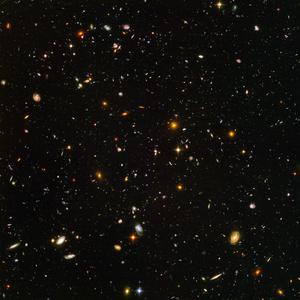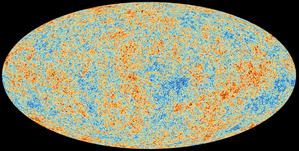Glossary term: Cosmologie
Description: La cosmologie est dérivée des mots grecs kosmos (harmonie ou ordre) et logos (pensée ou raison). La cosmologie en tant que discipline trouve ses racines dans la philosophie et la religion ; les différentes cultures du monde ont leurs propres cosmologies qui visent à interpréter et à donner un sens à l'Univers. Au fil des ans, la cosmologie a évolué pour devenir une science d'observation de précision. Cela a été rendu possible par le développement d'observatoires terrestres et spatiaux avancés, ainsi que par des travaux théoriques pionniers et des simulations informatiques. La cosmologie, en tant qu'activité scientifique, vise à comprendre la formation, la structure et l'évolution future de l'Univers dans son ensemble, sur les plus grandes échelles, en comprenant les mécanismes physiques fondamentaux qui opèrent au sein de l'Univers.
Related Terms:
- Accelerating Universe
- Astronomie
- Astrophysique
- Théorie du Big Bang
- Variable céphéide
- Amas de galaxies
- Principe cosmologique
- Cosmos
- Énergie noire
- Matière noire
- Univers observable
- Théorie de la relativité générale
- Univers
See this term in other languages
Term and definition status: The original definition of this term in English have been approved by a research astronomer and a teacher The translation of this term and its definition is still awaiting approval
The OAE Multilingual Glossary is a project of the IAU Office of Astronomy for Education (OAE) in collaboration with the IAU Office of Astronomy Outreach (OAO). The terms and definitions were chosen, written and reviewed by a collective effort from the OAE, the OAE Centers and Nodes, the OAE National Astronomy Education Coordinators (NAECs) and other volunteers. You can find a full list of credits here. All glossary terms and their definitions are released under a Creative Commons CC BY-4.0 license and should be credited to "IAU OAE".
If you notice a factual or translation error in this glossary term or definition then please get in touch.
Related Media
Hubble Ultra Deep Field
Credit: NASA, ESA, and S. Beckwith (STScI) and the HUDF Team credit link
License: CC-BY-4.0 Creative Commons Attribution 4.0 International (CC BY 4.0) icons
Cosmic Microwave Background Radiation
Credit: ESA/Planck Collaboration credit link
License: CC-BY-SA-4.0 Creative Commons Attribution - Partage dans les Mêmes Conditions 4.0 International (CC BY-SA 4.0) icons










